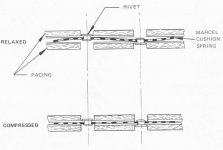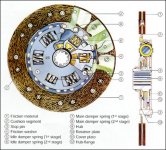Bwmurph
Well-known member
Is there any way to tell how many teeth are on the flywheel without dropping the bellhousing and counting them ? Can you tell by how many teeth are on the starter ? How many different Flywheels; I know of two (153 and 164, teeth I think), but don't know how to tell which is which and where and why they were used.
Any help is appreciated,
Bernie O.
Any help is appreciated,
Bernie O.








